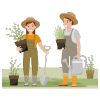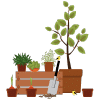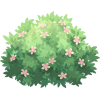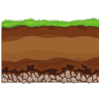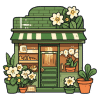Choosing the Right Plants for Your Garden: Seven Crucial Things to Consider
Your backyard is full of endless possibilities. All you need is some dirt, water, a few seeds, and a little determination, and you can grow your favorite fruits and vegetables full of flavor and nutrients you’ll never find at the grocery store. Or, you can choose to fill your space with colorful flowers or stately shrubs.
In fact, you have so many options that you might feel overwhelmed. Where do you even begin choosing plants to fill your garden?
And what if the plants you choose die as soon as you plant them?
At Ebyland, we love to help with your garden and landscaping needs, providing compost, mulch, and a variety of beautiful plants to the Cumberland, MD, area. We understand that choosing the right plants for your climate, soil, and personal needs is tough!
That’s why we wrote this handy blog post that covers the top seven crucial things to consider as you choose plants for your garden or backyard.
Let’s get started!
Not enough time to read? Here's a summary!
- Selecting plants should be based on a location's climate and growing zone.
- The goals for a garden, such as growing food or creating a specific aesthetic, should guide the plant choices.
- Considerations include the soil type and local weather patterns to ensure plant survival.
- Choosing plants also involves what is useful, delicious, or easy to maintain.
Did the summary make your curiosity grow? Read more below!
Consideration 1: Your Climate and Growing Zone
Imagine this: You love a steaming cup of coffee in the morning, so one day, you decide to buy a coffee plant. You’re so excited when it comes in the mail, and you plant it in your backyard next to the deck.
It thrives for a while, but as fall turns into winter, it withers. When spring comes, you wait for it to grow new leaves, but it never does.
Unfortunately, as delightful as it would be to grow your own coffee, a tropical plant will never survive a cold winter.
The best way to figure out what plants will survive your local climate is to go to the USDA website, type in your zip code, and see what USDA growing zone you’re in!
Wherever you buy your seeds and plants, whether online, from a catalog, or at the local greenhouse, you’ll find information about what USDA growing zones are compatible with those specific plants.
Consideration 2: Your Garden and Landscaping Goals
Once you know what growing zone you are in, you can narrow down your plant choices by defining your garden and landscaping goals.
For instance, is your goal to use your garden to feed your family? If so, focus on simple, high-yield vegetables like potatoes, squash, tomatoes, and carrots.
On the other hand, is your goal to grow delicious things you enjoy? If so, look up your favorite fruits, veggies, teas, or spices—there may be varieties that grow in your climate!
Is your goal to turn your backyard into a peaceful, beautiful space where you can relax after a long day at work? If so, look up various garden styles and see what appeals to you. Even though you may not be able to grow every plant you see in your inspiration photos, you can get the same effect by substituting similar local plants.
Finally, if your goal is to have a low-maintenance or eco-friendly backyard, focus on native plants or plants that are well-adapted to your area because those will need the least care and consume less water.
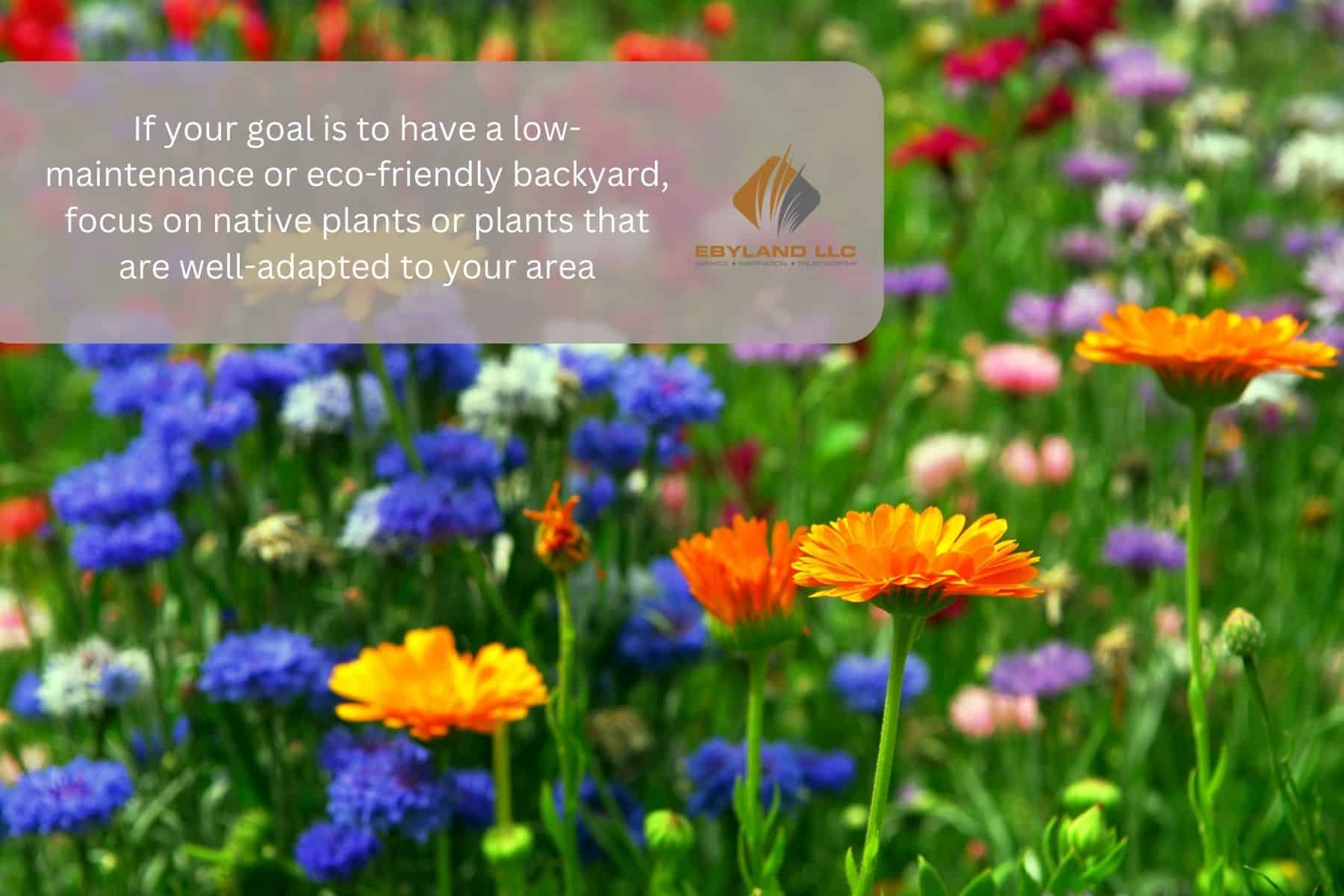
Consideration 3: What Plants You Find Useful, Pretty, or Delicious
Once you understand your garden and landscaping goals, focus on what you and your family find useful, pretty, or delicious.
For example, you may find a great deal on a sage plant, but do you use sage in your cooking? Do you find the plant pretty? Do you like the smell? If not, there’s no point in getting it.
Sweet potatoes are nutritious and easy to grow, but if your family doesn’t care for them, grow something else instead! You won’t magically become sweet potato lovers just because your garden is full of them.
If you’re trying to follow a specific garden style, re-create the design elements, textures, and color schemes you love using plants that thrive in your region. Our recommendation is to go to a local nursery with your inspirational photos and pick out what looks pretty to you!
Example 1: A Japanese-inspired garden
Japanese gardens are simplistic, emphasizing natural elements and often incorporating water features. You can get the same look by filling your backyard with plenty of trees and shrubs of various heights and textures, choosing ones you think are pretty and that work well in your climate.
You can complete the look with whatever water gardens, natural stone, and flagstone pathways most appeal to you.
(For more information about incorporating water features into your garden, read our Beginners Guide to Water Gardens.)
Example 2: An English cottage-style garden
Cottage-style gardens are defined by a profusion of bright flowers that grow in a delightful tangle. You can recreate this look using almost any type of flower, so long as it grows well in your area. So choose the flowers that you love!
Just remember to vary the flower heights, with taller flowers in the middle or at the far edge, so that the shorter flowers don’t get lost among the bigger ones.
Remember: if you’re drawn to specific perennials like azaleas or roses, buy the plants while they’re in bloom so you can see the colors with your own eyes before buying.

Consideration 4: What Plants You Find Easy, Low Maintenance, or Convenient
You don’t have an infinite amount of time and energy to pour into your garden. When choosing plants, consider what will be easy to grow, are low-maintenance, and convenient.
Ease of growth:
Although you never know what will and won’t grow well in the micro-climate of your backyard until you do some experimenting, some plants, such as radishes, have a reputation for being easy to grow.
Planting things in your garden that grow quickly and easily makes you feel like you’ve accomplished something and gives you the energy to keep going with your gardening goals.
Ease of use:
Some plants are easier to use than other plants, although what you find “easy” will depend on what you want to use your plants for.
For example, let’s say you want to grow tomatoes. With some varieties, all the tomatoes ripen all at once. Other varieties are more spread out, with some tomatoes ripening early, some ripening mid-season, and some ripening late.
If you want to have one big “tomato day” where you can a large amount of tomato juice, pizza sauce, and salsa to use throughout the winter, the first variety will be “easier” for you. But if you’d rather have fresh tomatoes available for sandwiches and salads all summer, the second variety will be “easier.”
Ease of maintenance:
Seed packets will tell you how long it takes for your plants to mature. Plants that mature quickly seem easier to maintain because you can harvest them and then be done with them.
But although this feels immediately rewarding, the downside is that now you have a patch of ground with nothing in it, where weeds may germinate and spread.
Other things that help keep your plants easy to maintain include:
- Growing local plants that thrive in your climate and will generally need less water
- Setting up automatic watering systems
- Using mulch to retain moisture in the soil, suppress weed growth, and regulate soil temperature
Finally, consider planting perennials. Perennials stay alive year after year instead of having to be re-planted every season. Although they might take more up-front labor, you can get to a place where your yard produces cherries, wisteria flowers, spearmint, rhododendrons, and all sorts of wonderful things every year with little effort.
Consideration 5: Your Soil Type
Climate is not the only thing that affects whether your plant lives or dies; much of it depends on your soil.
Although you can get your soil tested, this may not be helpful, as your soil can vary a lot depending on what part of the yard you’re in.
Ultimately, the best thing you can do for your soil is to improve it by adding organic matter such as compost, mulch, household food scraps, leaves, and lawn clippings. Also, raised garden beds are a great way to grow things if you have poor soil.
If you’re growing trees, ensure they grow well in your soil type. For example, some roots may not spread out well in clay soil. You can do a simple, at-home test of your soil composition by placing a soil sample in a jar of water and shaking it well. The soil will settle into layers of sand on the bottom, silt in the middle, and clay on top.
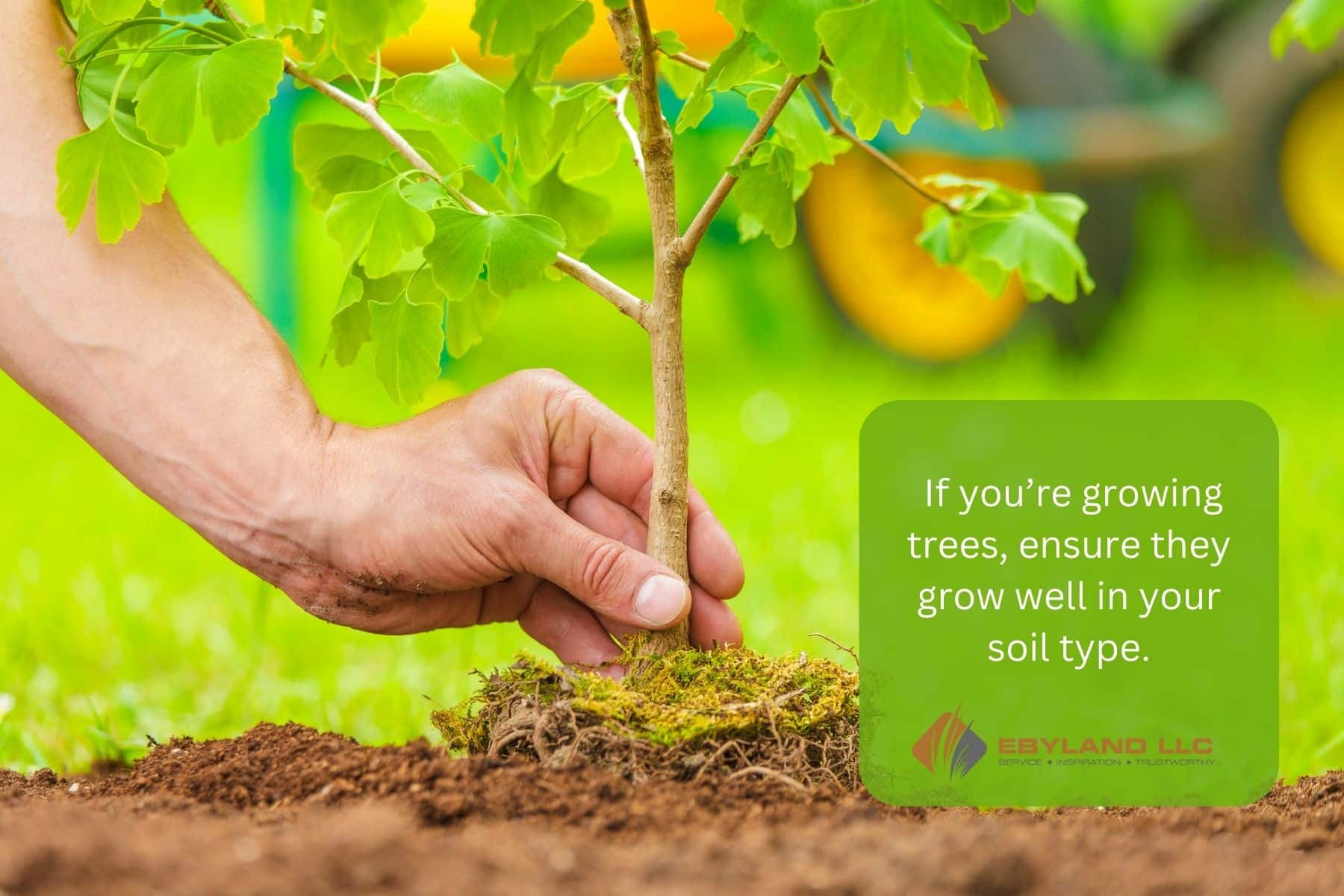
Consideration 6: Weather Patterns in Your Area
Going beyond climate, make sure your plants can hold up against extreme weather events in your area!
For example, if you live in a place that experiences hurricanes, tornados, or other high-wind events, don’t plant large trees with shallow roots! If you’re planting trees, plant them in clusters so they can help each other brace against the wind.
Finally, note what areas of your yard get more sun and wind and which are more sheltered, and choose planting locations based on that info.
Consideration 7: Your Local Resources
Although this blog gives you a basic overview of how to choose the right plants for your garden and landscaping, you’ll get much more specific advice from local resources!
First, contact your local county extension service (sometimes called a cooperative extension service) for landscape and gardening tips from experts in your area. You can look up your local extension service here.
If you like reading and researching, ask your local librarian for gardening books and resources specific to your area. If you are going for a particular landscaping style, your librarian can find books or articles about creating that style using local plants.
Finally, go to your local plant nursery or gardening supply store and ask for advice! They love to help and can show you examples of various plants right there in the store.
If you’re in the Cumberland, MD, area, please stop by Ebyland if you’d like region-specific advice about what plants to grow!
We offer an assortment of gardening supplies, including:
As well as other outdoor supplies like:
We’d love to show you around and answer any questions you may have about what plants to grow in your yard or garden!


